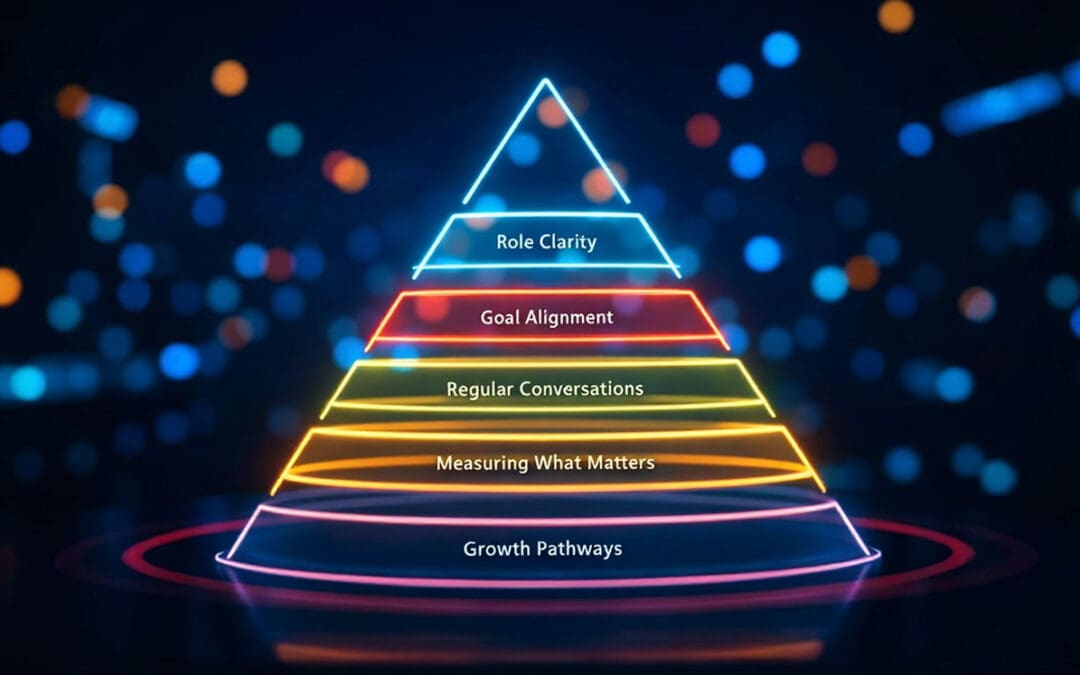PS Reviews: Falon Fatemi’s Article About AI and Employee Engagement
In the recent Forbes article, “How AI Can Drive Employee Engagement”, Falon Fatemi discusses the use of AI to drive employee engagement in the workplace. “According to research by Gallup, the majority (51%) of US workers do not feel engaged at work,” begins Fatemi. This is statistic is staggering and extremely costly, as employee engagement is directly correlated to productivity. “Gallup has dubbed the state of affairs an ‘employee engagement crisis’ – and for good reason,” explains Fatemi, “highly engaged business units realize a 21% improvement in profitability.” Employee engagement is a present challenge that requires long-term commitment and solutions. “To tackle the problem, many forward-thinking companies are turning to AI,” Fatemi acknowledges. These companies use AI and technology, like Performance Scoring, to direct leadership where and how to engage employees. With objective data displaying areas of high, medium and low performance, employee development is realized for these businesses, and so are increases in productivity.
“Real-time feedback”
The first aspect of employee engagement that Fatemi mentions AI is affecting is real-time feedback throughout organizations. Engagement surveys have been a popular tool among businesses looking to prioritize employee engagement over the last decade. “Organizations and HR departments rely on ‘pulse’ engagement surveys,” Fatemi writes, but “results quickly become lagging indicators that fail to reveal the current state of affairs.” Simply put, businesses struggle with the correct and immediate action plans from the engagement survey results. Feedback is most effective when continuous and received in real-time. Performance Scoring is a continuous feedback system that reports actionable data in real-time. Where engagement surveys may become lagging indicators, Performance Scoring’s features clearly indicate areas of high, medium and low performance in real-time to empower managers. Fatemi echoes this thought by saying that “this data empowers HR professionals to engage in swift action and surface the type of personalized recommendations that could never be gleaned from traditional annual engagement surveys.”
“Learning and development”
Employee engagement should be followed by employee development when done effectively, and development is a high priority of today’s workforce. “Organizations that provide employees with compelling and impactful learning and development opportunities have a leg up on their peers,” Fatemi declares. Learning and development share a similar challenge to employee engagement, where to begin? With custom ScoreCard Categories managed in Performance Scoring’s system, learning and development is also directed by objective data. The ScoreBoard depicts company-wide insight into high, medium and low performance to direct where engagement and coaching are needed. The date range feature is used to view growth, or lack of growth, over time to know when formal training is necessary. “AI is then able to suggest optimal learning that can help employees advance and reach new heights,” endorses Fatemi. Performance Scoring reports where and why learning and development are most needed, so that growth and employee development will occur.
“Team Composition”
The final employee engagement discussion point involves the prevalence of teamwork in the workplace. “Research has shown that companies that promote collaborative working are five times as likely to be high performing,” Fatemi mentions, citing an Institute for Corporate Productivity survey. This proves to be another area where if done ineffectively is extremely costly to businesses. Performance Scoring features reporting on performance of all organizational units – including specific departments and teams. Fatemi recognizes that “AI can determine what specific factors motivate specific employees and inform managers as to how to best motivate teams.” This statement is fundamentally parallel to Performance Scoring as its system measures only the specific Factors that drive success in each company role. Employee engagement is critical to the success of individual employees and the departments and teams that they make up. It takes a continuous commitment to employees but isn’t a major project to get started. There are many tools, like Performance Scoring, to easily facilitate the process over time. There is a “snowball effect” when employee engagement is done right, so get started today!





